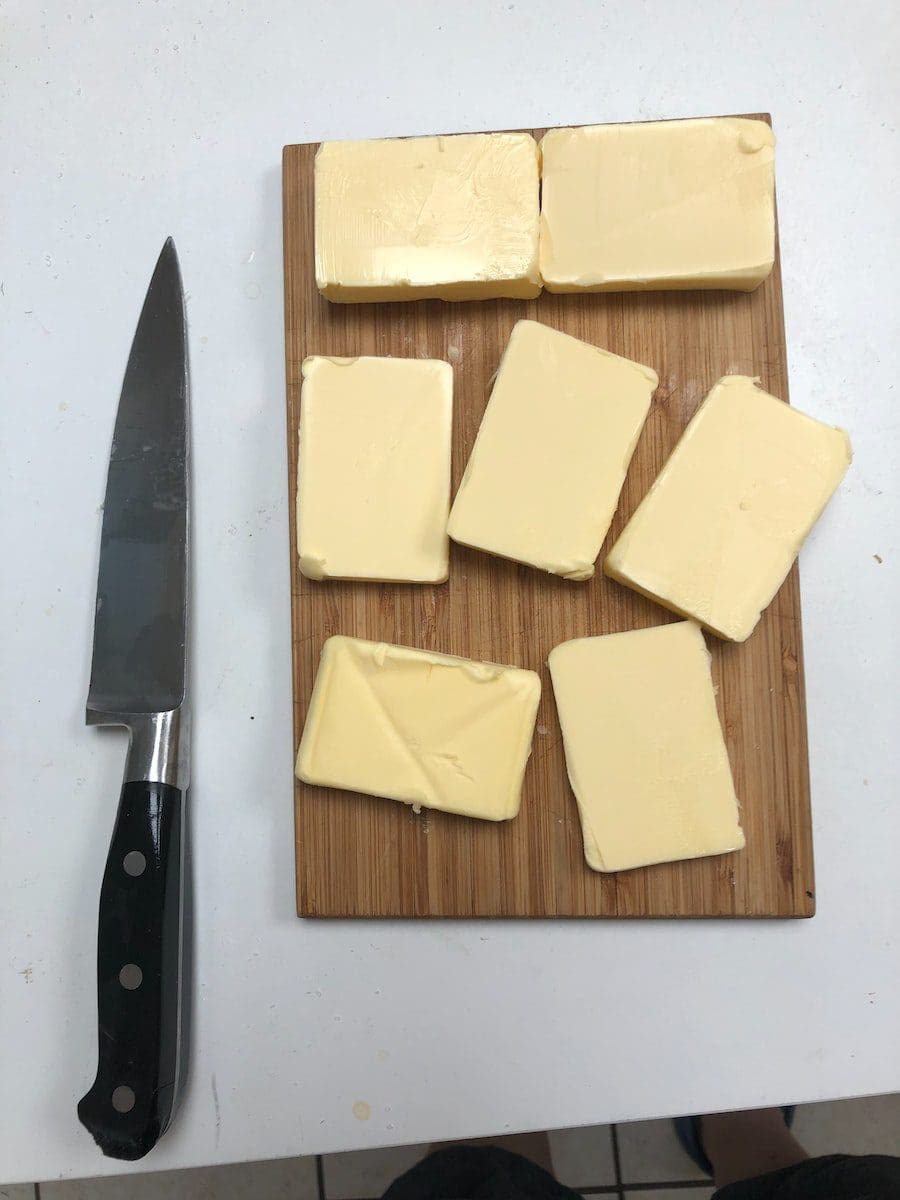Bread is one of the foods consumed globally. The oldest way of eating a slice of bread is to spread it with butter and Jam.
Spreads make the chewing process easier. Different types of spreads are available.
They can be produced at home using simple methods. Peanut butter and Jam make examples of bread spreads.
Homemade spreads are healthy and made from natural ingredients.
Key Takeaways
- Butter is a dairy product made by churning cream, containing at least 80% milk fat, while fat spreads are products made from various oils and fats, with added ingredients.
- Fat spreads can be healthier alternatives to butter, as they may contain less saturated fat and cholesterol and can be fortified with vitamins and minerals.
- Taste and texture can vary between butter and fat spreads, with butter having a rich, creamy flavor, and fat spreads offering a range of options to suit different preferences.
Butter VS Fat Spread
Butter is a dairy product made from milk or cream. It is made by churning cream until it becomes solid, and has a rich, creamy flavor. Fat spread is a non-dairy spread made from vegetable oils. Its spread may also be lower in saturated fat than butter, making it a healthier option.

Butter is semi-solid and creamy at Room temperature. This dairy product consists of protein and fat from Milk.
Churning of milk protein and fat gives butter. In its semi-solid condition, butter can be used as a spread for bread.
Melted butter serves as a condiment. Pan-frying and baking utilize butter in different forms.
Vegetable oils like sunflower oil and soybean oil form the main ingredient in the fat spread. Hydrogenating these oils gives a paste of creamy consistency.
It also helps in extending the shelf life of the product. This hydrogenation process leads to the formation of trans fat.Trans fat is harmful to health and may cause heart problems.
Comparison Table
| Parameters of Comparison | Butter | Fat Spread |
|---|---|---|
| Method | Churning | Hydrogenation |
| Ingredient | Milk | Vegetable oil |
| Health status | Healthy | Non-healthy |
| Color | Yellow to white | Yellow |
| Uses | Baking, Topping | Sauteing, shallow frying |
What is Butter?
Cow’s milk is the main base for butter production. Sheep, Goat, and Buffalo milk can also be used for butter production. The fat content of the milk is separated in the process of churning.
Fat forms small globules and float up. Removing the globules gives clarified butter.
Salted and Un-salted butter differ in taste
Generally, butter is pale yellow. It can range from dark yellow to white. Color depends on the feed given to the cattle and its genetics.
Butter originated from the Greek word butyrum meaning Cow-cheese. The micro globules of butter in milk cannot clump together.
Colored butter involves the addition of food colors
Agitating breaks the phospholipid membrane. It causes the fat globules to join together.
Various production methods yield butter with a different consistency. Butterfat may be present in the form of crystals.
The crystal-rich butter is hard. The watery fluid with butter globules on top is the buttermilk.
Buttermilk separates from butter by draining off. Traditional butter production makes use of a wooden device called scotch hands.
Industrial butter production was not common in the past. Lack of refrigeration and preserving techniques was absent.
It leads to the storing of cream for several days before making butter. As a result, the cream fermented and developed a sour taste.
The butter made from this cream is called cultured butter. This butter is much creamy and tasty.

What is Fat Spread?
Fat spread made from vegetable oils is a cheaper alternative to butter. The hydrogenation of oils gives a creamy texture to it.
But, the product obtained is harmful to the human body. Fat spreads are said to be low in fat.
It doesn’t mean that there is no trans-fat. Milk fat spreads have exclusively milk fat.
The mixed fat spread contains a mixed proportion of milk fat and vegetable fats, Vegetable fat spreads contain only vegetable oil fat. They are similar to margarine but, low in fat.
Some fat spreads are fortified with Vitamin A and D. Fat spreads must be water in oil emulsion. The fat content must not exceed eighty percent.
The moisture level should be more than 56 percent.
Fat spreads can be substituted for butter in baking. Using a fat spread with 60 percent of fat does not affect the texture of the baked product.
Fat spreads with less fat content affect the texture. They can be spread on pieces of bread.
Fat spreads are used as toppings for parathas, pav bhaji, pulao, and soups.
The ideal Fat spread must be low in fat content. But, many products in the market lack this character.
The fat content may vary from one product to another. So not all fat spreads can be healthy.
It is our role to check the fat content. Fortified fat spread offers vitamins like A and D.
Sauteing and shallow frying can be done with fat spreads.

Main Differences Between Butter and Fat Spread
- Butter is natural. It is derived from Milk by natural process. Fat spreads are highly processed.
- Homemade butter contains no preservatives. They spoil within a few days. Fat spreads contain added preservatives to increase the shelf life
- Butter is healthy since it contains natural ingredients. Fat spreads may not be healthy as butter. Fat spreads contain toxic trans fat
- Butter making involves the churning process. Fat spreads production involves hydrogenation. Churning is physical agitation. Hydrogenation is a chemical process. It changes the chemical composition of vegetable oil
- Milk form the main product involved in butter production. Vegetable oils like safflower oil and sunflower oils are used in fat-spread production. Milk is utilized in some methods of fat spread preparation

- https://onlinelibrary.wiley.com/doi/abs/10.1111/j.1365-2621.2001.tb16082.x
- https://digitalcommons.usu.edu/cgi/viewcontent.cgi?article=1357&context=foodmicrostructure
